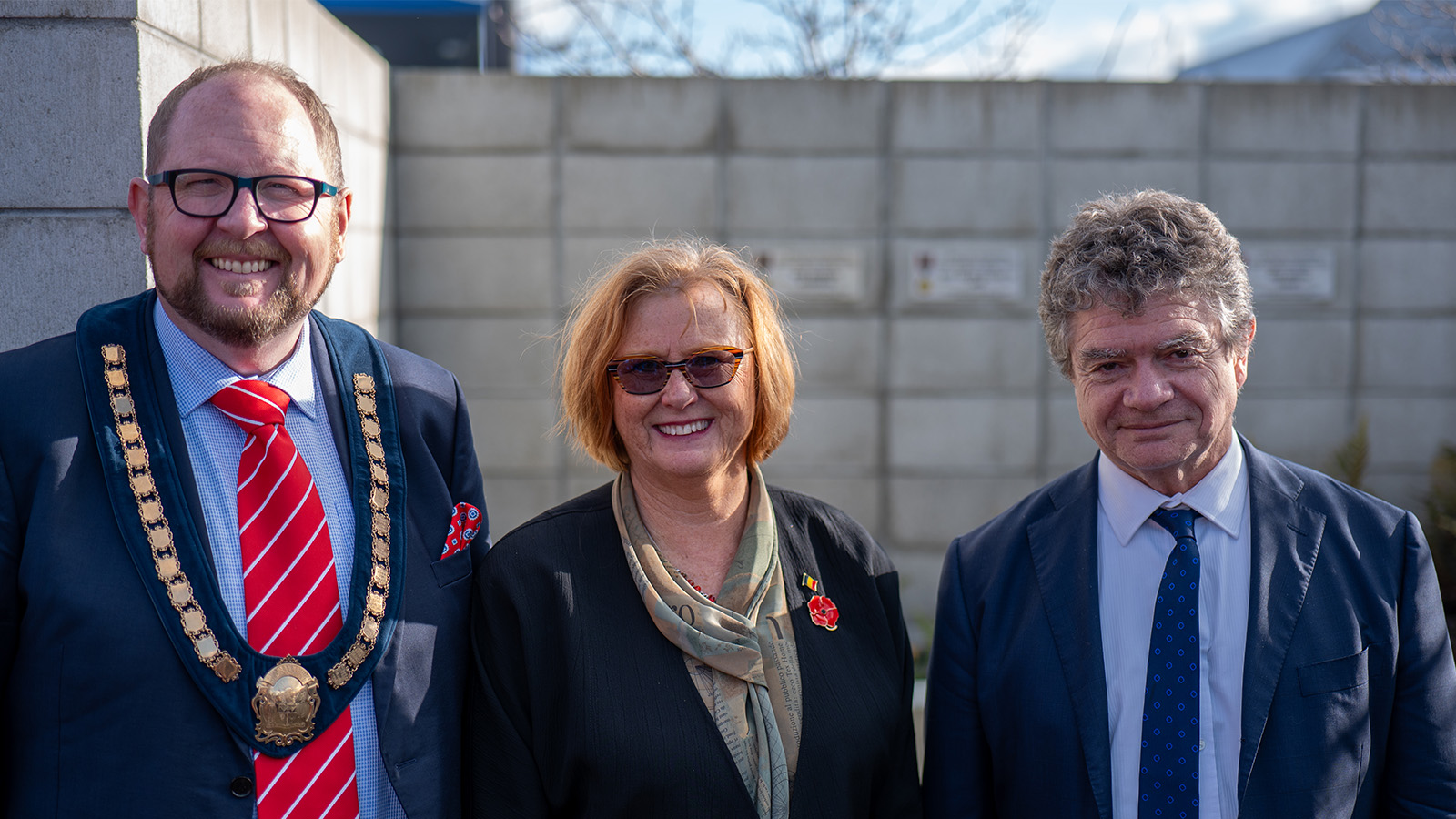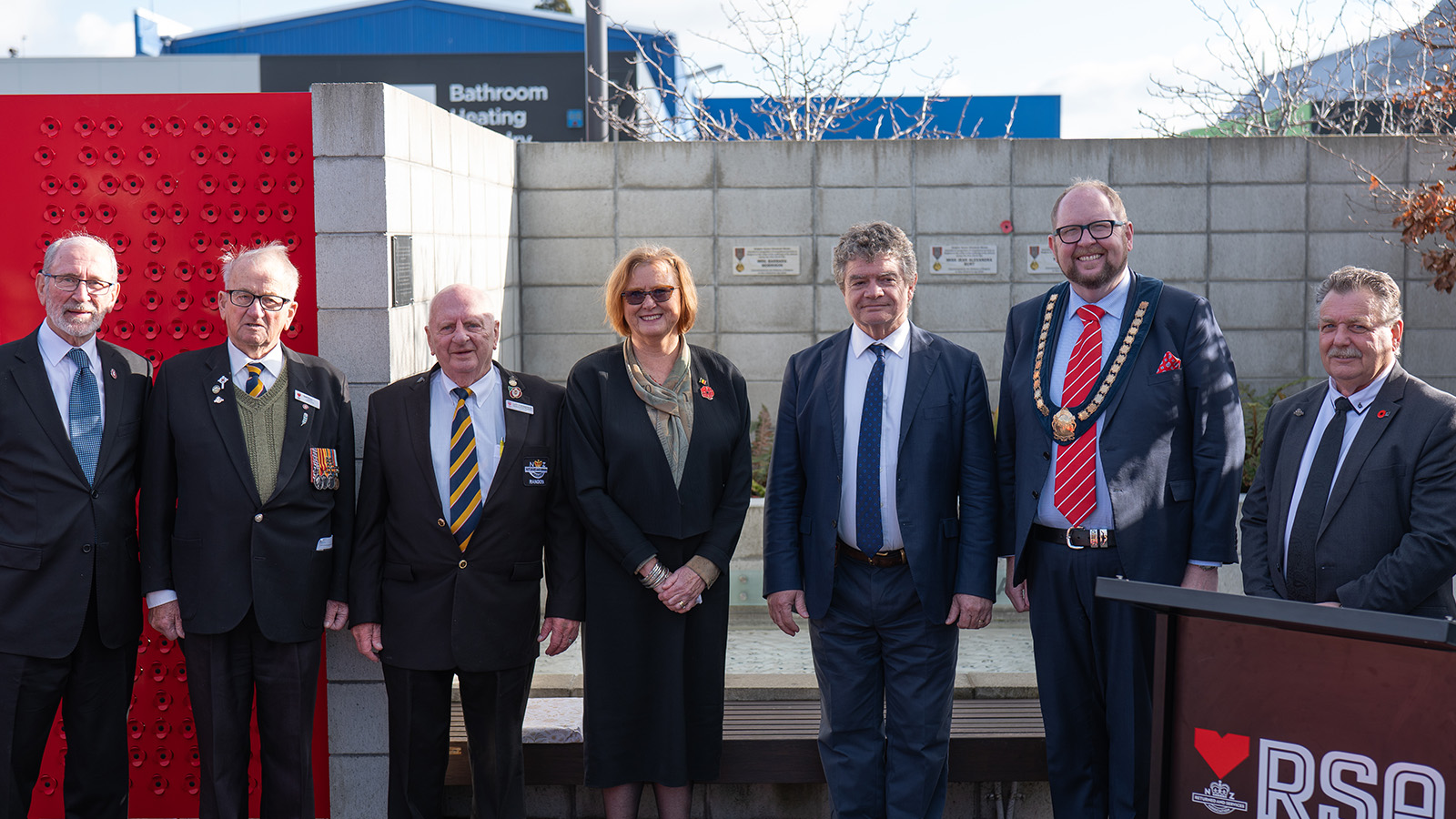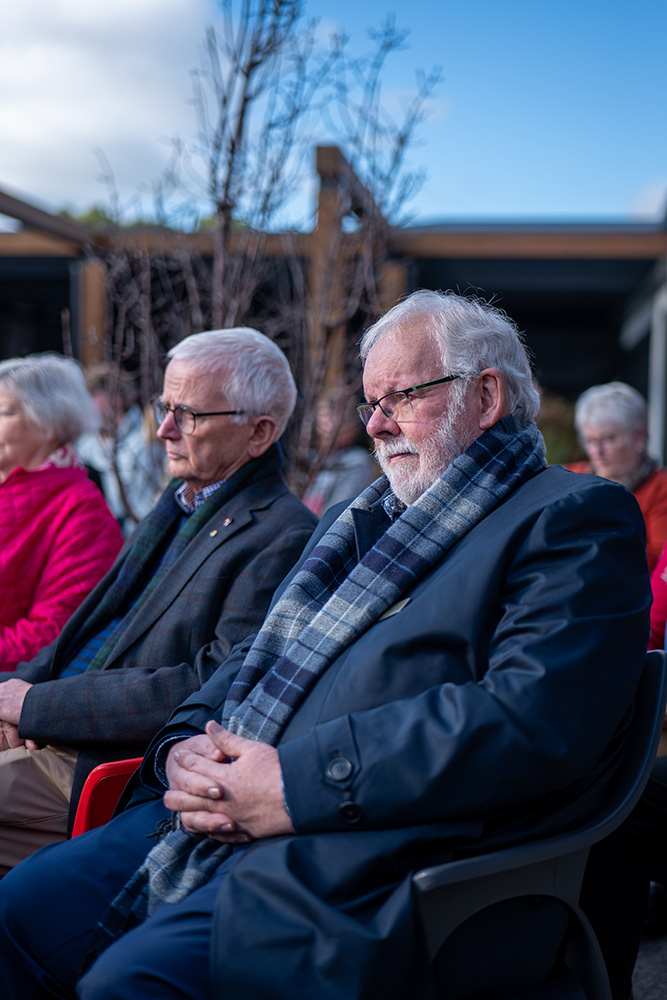Mayor Dan Gordon hosted a visit from the Belgian Ambassador, His Excellency Michel Goffin in the Waimakariri District over the weekend.
They were also joined by the Honorary Belgian Consul to New Zealand Lieve Bierque well as members of the district’s RSAs and the Waimakariri Passchendaele Advisory Group.

The Belgian flag is currently flying alongside the New Zealand Flag outside the Rangiora Service Centre on High Street to mark the visit.
Mayor Dan says it was a wonderful occasion to acknowledge the twinning relationship, between Waimakariri and the Zonnebeke Municipal Council in Belgium.
Part of his speech below:
“At the end of the year a number of us from the Waimakariri District will be travelling on a personally funded trip to the province to mark Armistice Day.
It will be my third trip to Zonnebeke and I am so looking forward to returning.
I first visited in 2013. Then in 2017, I had the privilege of attending the 100th anniversary of the Battle of Passchendaele, as part of the Council delegation to Belgium.
It was a momentous occasion to be there, where members of C Company from Kaiapoi, and D Company from Rangiora, formed part of the Canterbury regiment, which fought in the area at least seven local men lost their lives in Zonnebeke.
It was humbling to visit the region where so many New Zealanders lost their lives, in what is considered to be the bleakest day in New Zealand’s history.
More New Zealanders are buried in Belgium, than in any other part of the world, with over 12000 New Zealand service personnel buried or commemorated.
I had the honour of laying a wreath at the Menin gate, where tens of thousands, of servicemen of the British Empire, marched through on their way to the battlefields.
The memorial stands as a reminder of those who died, with a daily service that recites the ode, and the last post is played.
Visiting the location of the battle of Passchendaele was a sobering experience – with 2700 casualties - in terms of lives lost in a single day this battle is considered the greatest disaster in New Zealand’s history.
It’s very hard to put into words what I felt when standing on such hallowed ground knowing the absolute devastation that occurred some 100 years before.
As I listened to the description of what had taken place, I recall my hair standing out on the back of my neck, as like many -we had family who fought at the Battle of Passchendaele.
I thought of my uncle from Belfast who was a sergeant major at Passchendaele, and as a result of mustard gas suffered a serious respiratory infection for the rest of his life.
It was a deeply moving experience which is hard to describe, but I am sure those who have visited such places, will understand how we felt.
Several memorable occasions stood out for me including the singing of our National Anthem led by our New Zealand Armed forces, and the Haka performed at the Menin gate.
These were powerful, deeply moving experiences and made me feel immensely proud to be a New Zealander.”
The visit also marked the ceremonial placement of the Elisabeth Plaques in the Rangiora RSA. These plaques, named after Queen Elisabeth of Belgium, commemorate the extraordinary contributions of foreign women who aided Belgian refugees and the military during the Great War.
Mayor Dan says they remembered Helen Elizabeth Lane, Barbara Morrison, Jean Alexandra Burt and Rosina Tabart, for their service in Belgium and to our Country during WWI.
“We visited two of their gravesites and the Ambassador and I laid flowers on their graves. We are honoured that Queen Elisabeth of Belgium created a medal in her name to mark such service.
It is fitting given our special relationship between Zonnebeke and Waimakariri that Rangiora RSA has been selected, to be the host for these Elisabeth Plaques.
We can never thank those who made the supreme sacrifice during WWI and other conflicts since - but we can remember them always.
The best way we can do this is by coming together, forging these deep connections and honouring our shared histories.”


